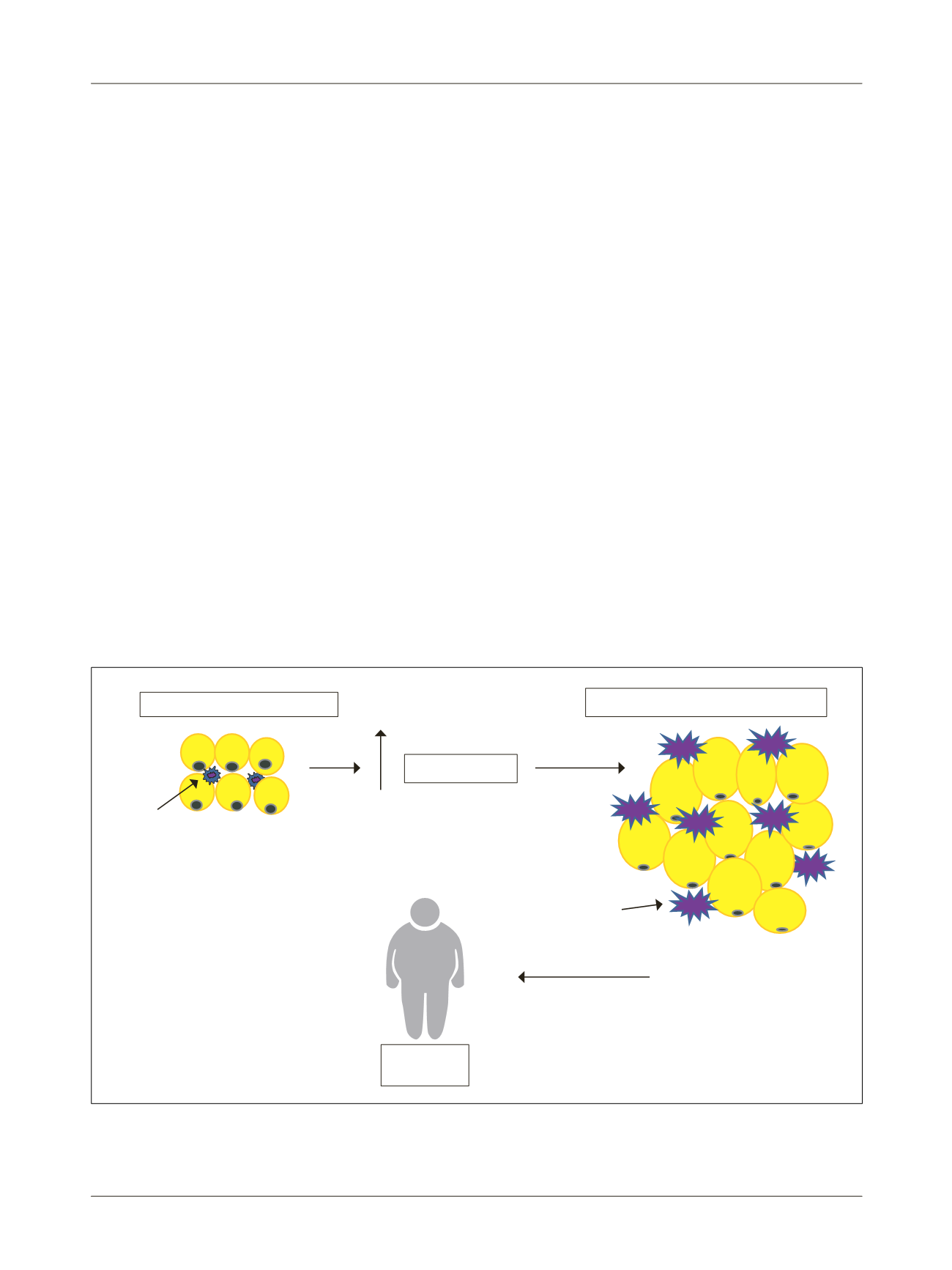

F
rancisqueti
FV
et
al
.
86
R
ev
A
ssoc
M
ed
B
ras
2017; 63(1):85-91
stress, which are precursors of various complications
involving MetS components, namely insulin resistance,
hypertension, and hyperlipidemia (Figure 1).
8,9
Because
MetS is associated with cardiovascular complications, the
main cause of death worldwide, it is important to under-
stand the factors that are involved in this disorder. Thus,
this review aims to present the involvement of oxidative
stress in the onset of metabolic syndrome.
M
etabolic
syndrome
and
oxidative
stress
Inflammation and oxidative stress occur when the energy
supply begins to exceed the storage capacity of adipocytes
and, as a result, hypertrophy occurs.
10
This hypertrophy
leads to a higher release of adipokines as proinflamma-
tory cytokines such as interleukin-1 (IL-1), interleukin-6
(IL-6) and tumor-necrosis factor alpha (TNF-
α
), resulting
in low-grade chronic inflammation, which begins in adi-
pose tissue and eventually reaches the circulation and
other organs.
11,12
One of the first consequences of inflam-
mation is insulin resistance, since TNF-
α
prevents the
phosphorylation of insulin receptors, interfering in their
cascade action and preventing their functioning.
13
Insulin
resistance and type 2 diabetes mellitus are classically char-
acterized by dyslipidemia with hypertriglyceridemia, low
HDL-cholesterol and LDL-cholesterol appearance.
14
In-
sulin resistance decreases insulin function, leading to a
change in storage lipids that is a mechanism dependent
on this hormone.
15
Another cause of inflammation is oxidative stress,
which can be triggered by adipocytes. When fat mass in-
creases, insufficient irrigation can lead to lack of oxygen
and, thus, to cell necrosis. The process of phagocytosis to
eliminate these dead cells results in increased inflamma-
tory infiltration and also oxidative stress by liberation of
free radicals such as nitric oxide and hydrogen peroxide,
16,17
which may negatively impact components of MetS.
18
Oxidative stress is classically defined as an event re-
sulting from the magnitude of imbalance between oxidant
and antioxidant substances,
19,20
generated in a setting of
oxidation-reduction reactions. Since the generation and
the action of these substances depend on this oxidation-
-reduction system, authors now use the term “imbalance
of redox system” to refer to the oxidative stress.
21,22
Com-
monly known as free radicals, oxidants include reactive
oxygen and nitrogen species, which perform the oxidation
of lipids (lipoxidation) and glucose (glycation), substanc-
es found in excess in obesity. Excessive food intake in-
creases the amount of energy and nutrients in the blood
stream.
23
Lipoxidation products include malondialdehyde,
glyoxal, acrolein, 4-hydroxy-nonenal (HNE), while the
– Obesity
– Inflammation
– Oxidative stress
Lean adipose tissue
Caloric intake
Metabolic
syndrome
Tissue-resident
macrophages
Infiltration
of
macrophage
Hypertrophic adipose tissue
FIGURE 1
Excessive calorie intake leads to hypertrophy of adipose tissue and increased macrophage infiltration, a condition which favors
inflammation and oxidative stress situations: a precursor of the metabolic syndrome.
















